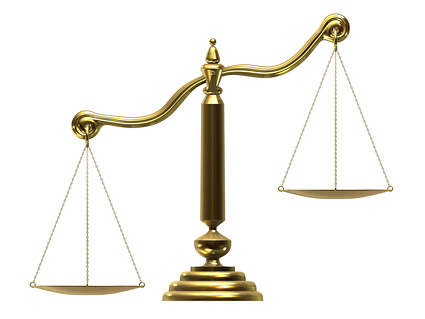The Two Coins
Hi!
I’m still on vacation but I wanted to do something different over the holiday weekend, so, I’m running another re-run, but this time from October 2016. I sent today’s email as the first part of a bookend around Columbus Day that year, with the second part coming on the holiday Monday. Today, I’m doing the same — part two will hit your inboxes next Monday. I’m not linking to the old version because that would make it less fun!
It’s not trivia: it’s a puzzle. And it’s probably my favorite one ever. One of my high school math teachers gave it to us and most kids just gave up (well, on the second part of it); I kept at it until I came up with a solution. (If memory serves, I worked on it during my other classes that day, suggesting that my persistence isn’t consistent with good time management skills.)
Let’s get started.
Part 1: The Heavier Coin

You have a balance (like the one above) and twelve coins, one of which is heavier than the rest, but you don’t know which one it is. Using just 3 weighings on the balance, can you identify which coin is the odd one out?
The answer to this one is below. If you think it’s easy, you’re right — it is. But before we get there, mostly to give you some time to figure out a solution before you scroll, I will do something new here. At the bottom of most emails, I have a quick plug, asking you to recommend Now I Know to a friend.
Like today’s Now I Know? Share it with a friend — just forward this email along.
And if someone forwarded this to you, consider signing up! Just click here.
If you haven’t shared the newsletter recently, please consider doing so — spread the love! Plus, you may want to enlist those friends to help you solve the second part of the puzzle, coming right after the answer to the first part.
Here’s that answer.
The Heavier Coin: The Solution
It’s pretty easy and there are a lot of ways to solve it. I’m going to pick one approach — probably the most straightforward one.
Step 1: Put four coins on either side of the balance, reserving four others. If the balance stays even, you know that the heavier coin is among the four reserved. If the balance tips, you know that the heavier coin is on the side that went down. Either way, you now have isolated the heavier coin within a subset of four.
Step 2: Put two coins of the four identified in Step 1 on either side of the balance, reserving none. Whichever side goes down has the heavier coin.
Step 3: You have two coins left and can use the scale once more. That’s a great situation to be in! Put one coin on either side and whichever side drops contains the heavier coin. You win.
Pretty simple, right? The trick is to realize that if the balance stays level, you’ve still gained key information.
Now, let’s make it harder
Part 2: The Different Coin
You have a balance (like the one above) and twelve coins, one of which weighs a different amount than the rest, but you don’t know which one it is — and you don’t know if the different coin is heavier or lighter than the rest. Using just 3 weighings on the balance, can you identify which coin is the odd one out (and whether it’s heavier or lighter)?
It’s a simple, minor change, right? Shouldn’t be any more difficult? Well, try it out. It’s much harder. Use the three steps I outlined above and you’ll see how quickly that plan falls apart.
I learned this puzzle in high school — my math teacher gave it to us and I spent the rest of the day working out the solution. A few years later, I asked a group of friends the question, and a half-dozen or so eventually worked it out, but it was a team effort and took a good amount of time, perhaps 45 minutes or an hour (or more). So be prepared to invest some time if you want to solve this one. Either way, I’ll be back with the solution on Monday.
Have a great weekend!
